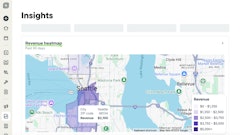
If you’re just starting out or you’re relatively new to the landscaping business, creating a budget may not be at the top of your list of priorities. But the simple fact is that you should have a budget for your known expenses.
A budget is a critical tool for a landscaping contractor. It not only helps you make sure you’re on track to meet your goals each month, but also helps you plan for the future. Knowing your numbers is also key to pricing jobs accurately and making sure you’re hitting your profit margins. A landscape business budget template or business management software is a great place to start.
The importance of tracking actual expenses against what you’ve budgeted
Another benefit of having a budget is being able to track when your actual expenses exceed what you were expecting for the month.
By comparing your actual expenses against what you have budgeted, you can see where your challenges are and make adjustments to make timely decisions before you run out of financial resources.
Direct expenses versus overhead
When creating and tracking your budget, be sure to categorize your expenses as direct expenses or overhead. A lawn care and landscape business budget template should help you track your direct expenses and overhead separately.
Direct expenses are the expenses you have as a result of normal operations as a landscaping contractor. This includes things like materials, labor, fuel and other costs of running equipment. These costs are variable and often fluctuate from month to month based on the volume of work you do.
Overhead represents the ongoing costs that are required to run your business. This includes rent, utilities and insurance on your facility, as well as office equipment and supplies and management and administrative salaries. These costs typically remain the same, no matter how much work you’re doing.
Apply overhead to the work you do and understand your true costs
As a landscaping contractor, you need to know how much it costs you to do the work so you know how much to charge customers. Rather than simply calculating labor and materials and marking it up, it’s important to take your overhead into account. Otherwise, you run the risk of pricing your services too low to meet your profit goals—or even too high, which could make you less competitive.
For accurate pricing, some amount of overhead should be allocated to each job. To do this, add up your weekly overhead costs and divide that total by the number of hours of direct labor you average per week. Multiply that amount by the number of hours you estimate the job will take and add it to your estimate.
Let software do the heavy lifting
Landscape business budget templates can manage budgets, track profitability and calculate overhead at the customer, job and/or crew level.















![Gravely Pro Turn Mach One My23 Dsc03139 Edit 1200x800 5b2df79[1]](https://img.greenindustrypros.com/mindful/acbm/workspaces/default/uploads/2025/10/gravely-pro-turn-mach-one-my23-dsc03139-edit-1200x800-5b2df791.BucBnDoN22.jpg?ar=16%3A9&auto=format%2Ccompress&fit=crop&h=135&q=70&w=240)



